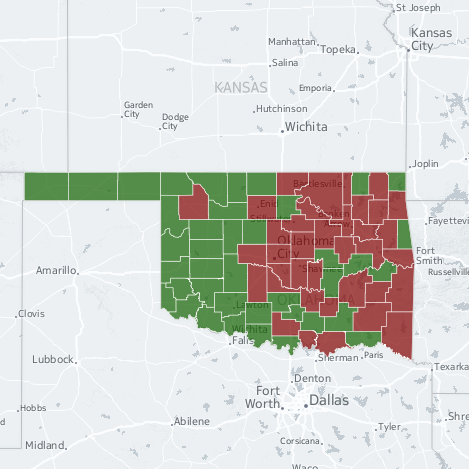
Oklahoma Divided: How Geography Influenced the Vote on ‘Right-to-Farm’
-
Joe Wertz -
Logan Layden
Oklahoma voters on Tuesday soundly rejected State Question 777, a ballot measure that would have made farming and ranching a state constitutional right. The final tally was roughly 60 percent against and 40 percent in favor of the amendment — a difference of more than 290,000 votes.
A county-by-county breakdown of the results suggests geography was a major indicator of voters’ attitudes on the so-called ‘right-to-farm‘ amendment.
The majority of the Oklahoma’s 77 counties voted to approve SQ 777, but the measure failed the hardest in the the state’s most densely populated areas — counties like Oklahoma, Tulsa, Canadian and Cleveland, StateImpact’s analysis of unofficial results data from the Oklahoma State Election Board show.
The only highly populated county that backed the measure was Comanche County in the southwestern part of the state, where Lawton is located.
The strongest support for 777 was found in rural counties: Like Roger Mills, and Texas and Cimarron in the Panhandle.
But not all rural counties supported 777. For example: Voters in southeastern Oklahoma’s Coal County rejected the measure 53 percent to 47 percent.
The data also show a clear east-west divide on the ballot question, with agriculture-heavy western Oklahoma generally supporting the measure, while many of the counties in the eastern part of the state rejected it.
Edit: After this post was published, Bob Doucette from Tulsa made a good point that we touched on in a previous story:
@joewertz Might also note that many of the no counties are in lake country, where water quality problems from runoff have been an issue.
— Bob Doucette (@RMhigh7088) November 10, 2016
